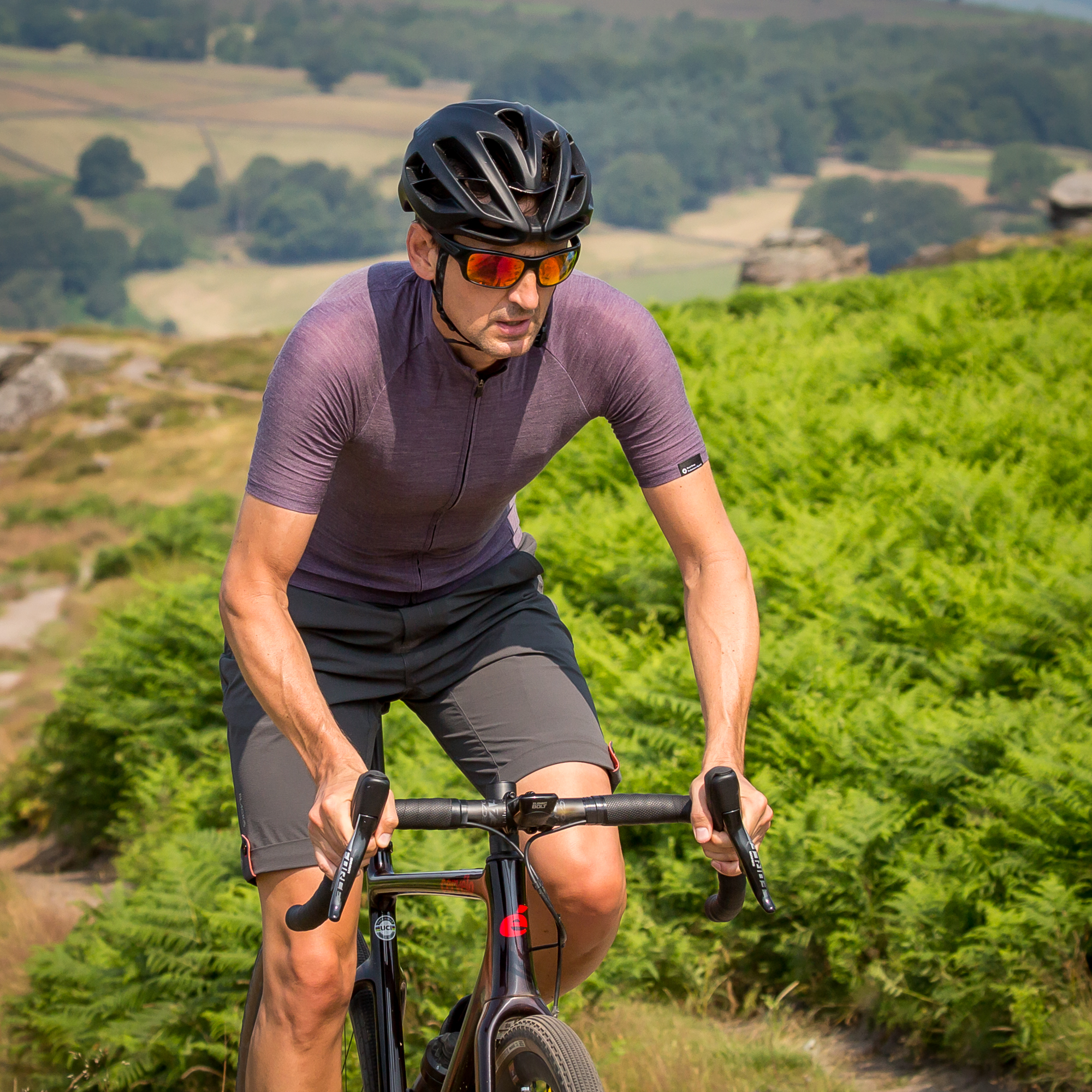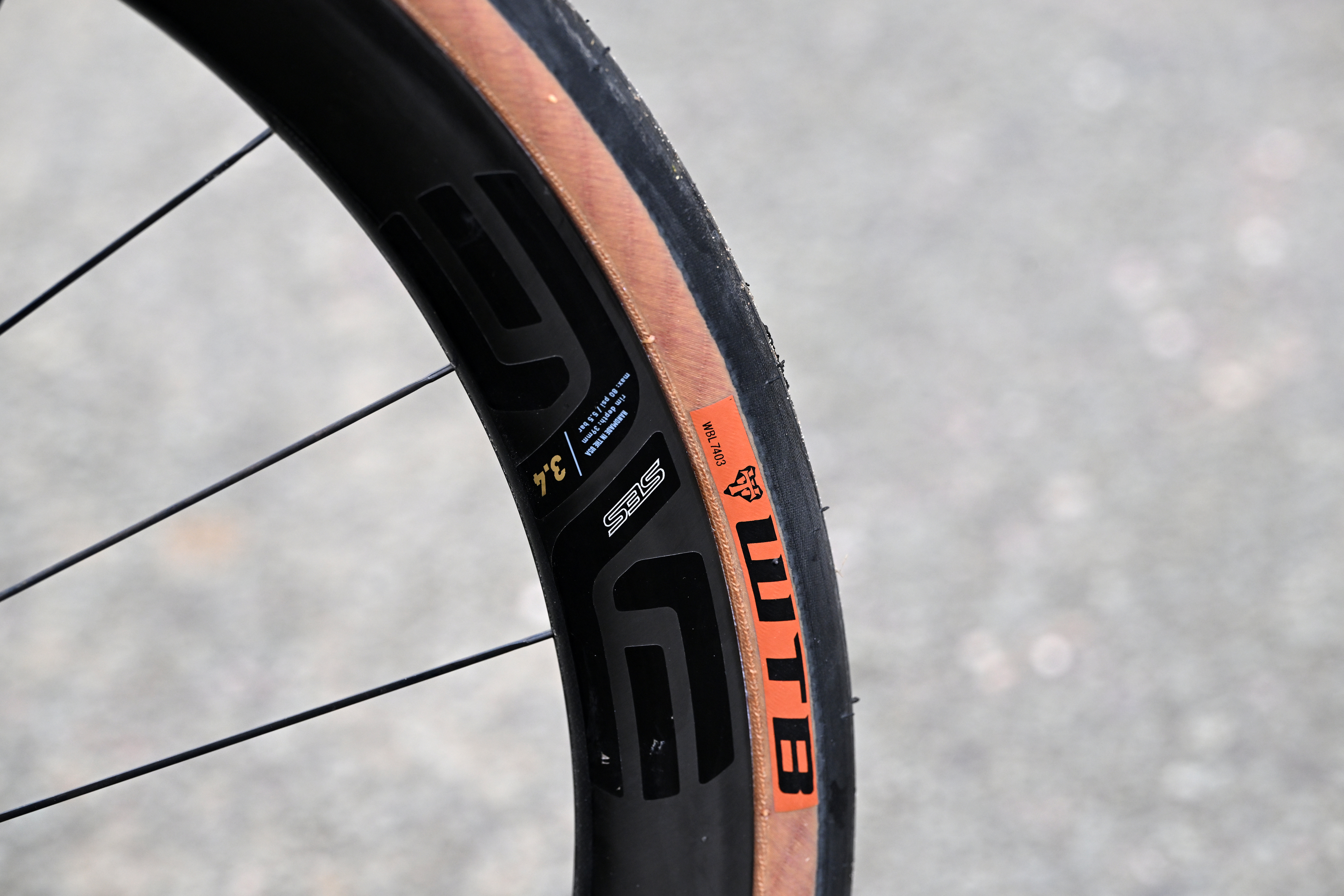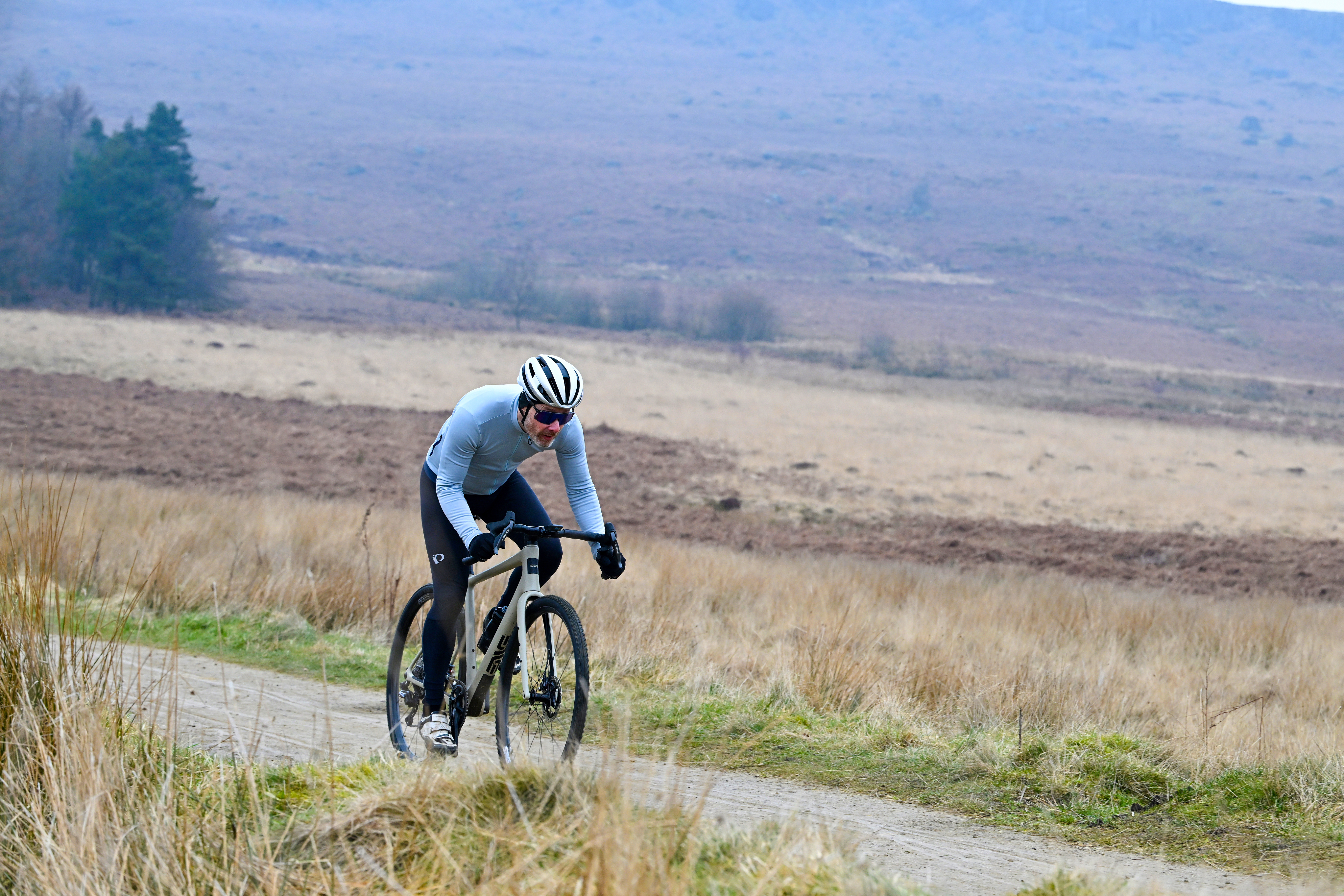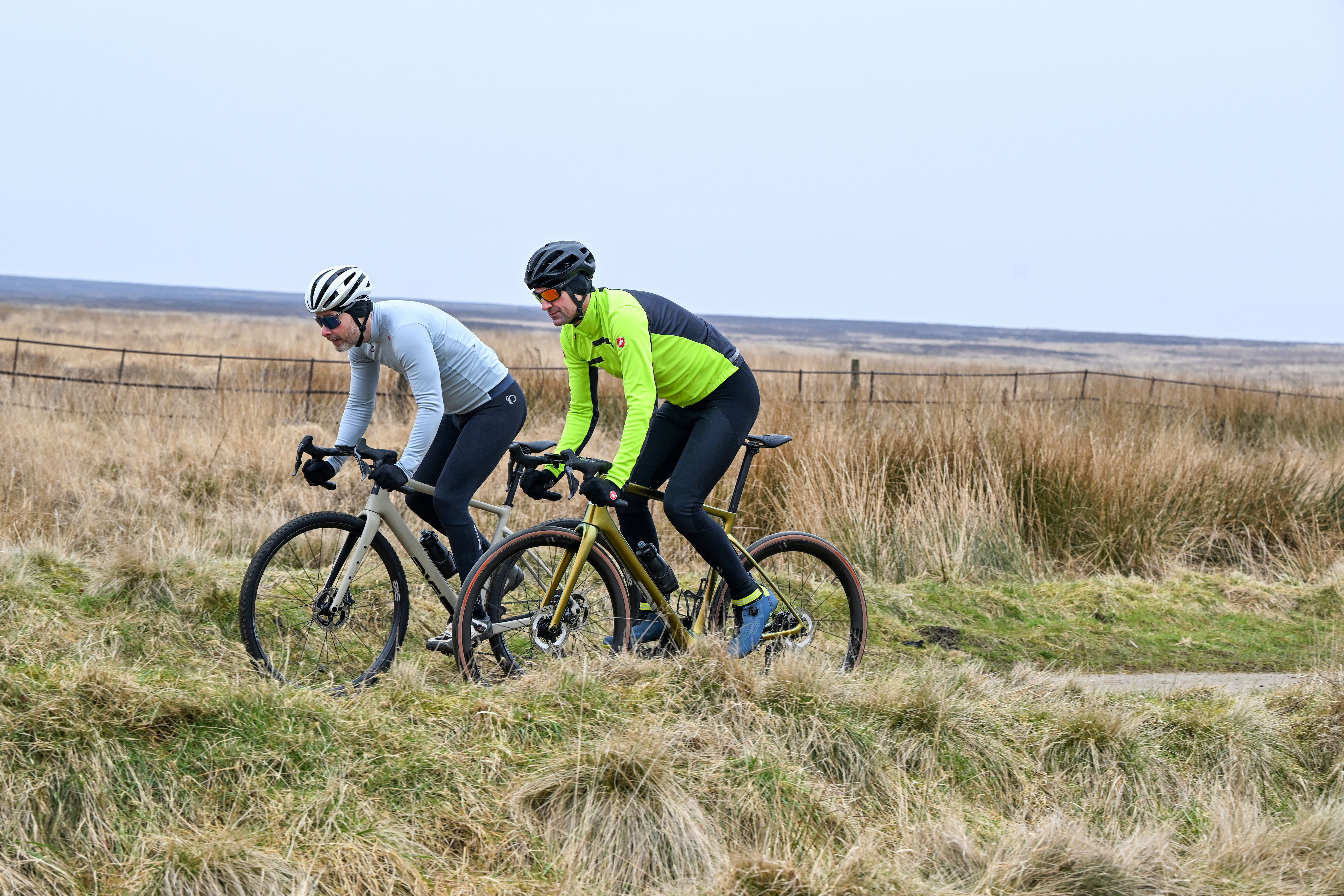I pitched a top-end all-road bike against a top-end gravel bike, here's what I found
Multi-surface machines go head-to-head-to-head and categories clash as Tim Russon rolls up for the ultimate do-it-all bike showdown


Once upon a time, there were mountain bikes and there were road bikes. Flat bars, knobbly tyres and a patina of mud versus drop bars, skinny tyres and a liberal coating of sweat. Choosing between the two was straightforward: one was for off-road, the other for on-road. Fast forward to 2025 and there are more genres of bikes than teeth on a cassette, with plenty of blurred lines between categories.
Marketing departments strive to ensure consumers abide by the sacred N+1 rule: there’s always room for one more bike. Two of the more recent categories of bike to emerge are ‘gravel’ and ‘all-road’, both of which have proved justifiably popular with riders. On paper, at least, both styles of bike offer versatility and utility that a full-blooded road bike or pure mountain bike cannot match. All-road and gravel bikes both have a much wider operating window than thoroughbred machines, representing, for some, better value for money – one bike for all purposes.
Allowing the rider to venture away from smooth tarmac surfaces with a degree of comfort while still making fast, efficient progress, these bikes cater to similar buying tastes. All-road bikes are intended to provide comfort and speed on a variety of surfaces, but with a bias towards asphalt and smooth, hardpacked trails. Gravel bikes, on the other hand, are designed to spend more of their time off-road on rougher, looser tracks. How to choose the right one for you?
Even within the relatively short space of time that gravel and all-road bikes have existed, their features and designs have developed rapidly. Gravel bikes have morphed from slightly more relaxed CX machines into something more akin to hardtail mountain bikes with curly handlebars. Meanwhile, all-road bikes have gained wider tyre clearances, onboard storage and even some aero aspirations. And even within our two categories, there can be big differences: gravel race bikes are not the same as gravel bikes aimed at bikepackers, for instance.
To compare the relative merits of all-road versus gravel, we have chosen two bikes from the same brand to pit against each other. Both are good, up-to-date examples of their respective genres: Enve’s Fray all-road bike and its Mog gravel bike. Admittedly, both bikes lean towards the premium end of their markets, but this may be to our advantage, since few design compromises have been made to appease the brand’s accountants. Most of the features and characteristics are common across bikes from other manufacturers in their respective categories, all-road and gravel. We’ll look at the theoretical differences and similarities between the two genres and then test the two specific models against each other in the real world – to see how those differences play out.
Distinguishing features

The Mog and the Fray seek to serve different rider needs
The most obvious defining feature of a gravel bike is the tyres. Knobbly rubber, at least 40mm but more likely 45mm-plus in width, designed to grip on loose surfaces and cope with a few rocks, roots and bumps. In contrast, the frame of an all-road bike is unlikely to accommodate such big tyres, but should still have room at least for slick 34mm tyres if not wider – a clearance in between that of a road bike and a gravel bike. In the case of our test bikes, the clearances are 50mm on the Mog versus 40mm on the Fray.
The second difference is in the handlebar shape. Yes, both types of bikes have drop handlebars, but all-road bikes have bars similar to those of a road bike, whereas gravel bikes tend to have bars with flared drops – for greater control on steep or technical offroad sections.
Gearing is the final obvious difference between all-road and gravel bikes. A single front chainring instead of two, with a commensurately large cassette, is the more usual gravel set-up, whereas most all-road bikes have two chainrings. Even where this does not apply, gravel bikes have lower (easier) gears than all-road bikes, to better cope with steep, loose, off-road hills and potentially heavy luggage. An all-road bike’s gearing, though higher than a gravel bike’s, is not as high as that of a pure road bike. Other, more subtle differences involve geometry, carbon layup, and optional features such as internal storage and luggage attachment points.
The tyre swap solution

Instead of choosing between the two types of bike, you could attempt to fudge the issue. Buy whichever style of bike is appropriate for most of your riding and then buy some extra tyres (or preferably, wheels and tyres) for the alternative terrain.
Most all-road bikes will accommodate skinnier gravel tyres. For instance, the Fray has clearance for 40mm tyres, so should be able to accommodate knobbly 37-38mm rubber easily enough. Similarly, fitting road rubber on a gravel bike means it will cruise along roads and lanes without the unnecessary drag of fat, off-road tyres.
Comparing our two test bikes from Enve, the gravel bike has a longer wheelbase and slacker head tube angle, which should make for more assured, confidence-inspiring handling off-road at the cost of a little bit of liveliness and efficiency on road. The differences aren’t huge – a few millimetres here and half a degree there. The Mog’s frame is 50g heavier than the Fray’s (which is, in turn, 50g heavier again than Enve’s road-racing Melee frame) to provide a bit more resilience against the rough and tumble of off-roading.
Gravel bikes should have more in-built comfort and compliance than all-road bikes, making them easier and less fatiguing to ride on rough terrain – albeit at the expense of some pedalling efficiency. These differences, though subtle, are important because, unlike tyres and handlebars, they can’t be changed or swapped out after purchase.
So, the stereotypical gravel bike has wide, knobbly tyres, a 1x drivetrain and flared handlebars, whereas its all-road counterpart has slick tyres, 2x drivetrain and normal-looking drop handlebars. The gravel bike has more relaxed geometry, longer wheelbase and a greater focus on strength and comfort than the all-road bike. Both styles are frequently equipped with bosses for top tube bags and mudguards, but it’s usually only gravel bikes that have mounting points for bolt bags and luggage. The Fray and Mog conform to all these ‘rules’, and both have in-frame storage for a tube and a few tools – now a common feature on all-road and gravel bikes. The Mog’s frame is adorned with a plethora of mounting points for bikepacking luggage.
The rubber hits the road

The all-road Fray feels fast
The all-road Fray feels pretty quick. Much like the Cervélo Caledonia, there is a fantastic blend of responsiveness and compliance across all types of tarmac, from perfect to pockmarked and potholed. This is a result of the 25mm internal width. This gives a superb platform for a bike that can take on any road surface and more, but does look rather odd when you look down and see such a wide expanse of rubber.
The Mog’s rims are the same width, albeit in the form of Enve’s AG25 wheelset, but with 44mm-wide tyres more appropriate for a bit of rough: a fast-rolling WTB Riddler/Raddler combo. The tread on these might not look super-aggressive, but adds a huge amount of grip compared with the nearly slick Exposure TCSs on the Fray.
Zip versus grip
The Fray can handle far more off-road terrain than you might imagine – true of most all-road bikes. With tubeless 32mm-plus tyres, there is a surprising amount of grip thanks to the large contact patch, and when the ground is dry and fl at, it’s in its element. Disused railways or farm tracks pose no issues for an all-road bike, but – and it’s a big but – there comes a point where the tyres and bike become overwhelmed. Wet, muddy, rocky or steep trails are unpleasant and dangerous, if not downright impossible. There is simply not enough traction available. No amount of relaxed geometry or carbon compliance will help you confidently ride up a muddy slope or down a rocky chute. Nor will 32mm tyres protect your potentially expensive carbon wheels from damage if a stray rock or errant root ambushes you.
Gravel bikes like the Mog, on the other hand, offer far more grip and control on this kind of ground, with many filling the niche that the first rigid mountain bikes did in the late 1980s. Indeed, some gravel handlebars are nearly as wide as the narrow, straight MTB bars that were de rigueur back then! Where an all-road bike rider might have to pick their way carefully down a trail to avoid damage to the bike or themselves, a gravel bike rider can smash their way down with relative impunity.

The Mog provides greater grip
On the road, the Mog’s tyres are the biggest differentiating factor, working against its reasonably aggressive geometry – there is no getting away from the extra drag and rolling resistance caused by its big, knobbly tyres. The second issue is the huge cassette, which has some large gaps between ratios, breaking up rhythm and cadence on the tarmac – at least when compared to the much smaller jumps in the Fray’s double chainring drivetrain.
On a short local loop that includes a road climb, smoothish bridleway and a rougher Land Rover track, the Mog dealt fine with the climb, albeit without threatening the KOM – sit, spin and enjoy the view. The Fray felt more encouraging and smoother, thanks to its closer ratios and slightly more aggressive position. Both bikes rolled along the bridleway without any real issues, but it was noticeable how what I thought of as a ‘smoothish’ trail suddenly looked and felt much more challenging on the 32mm tyres. I was painfully aware of the value of the Fray’s Enve wheels too, and was far pickier about line choice, desperate not to ding them on larger rocks.
The rougher track was a step too far for the Fray. Progress was painfully slow as I had to inch my way along, weaving around to try and stick to the smoothest possible line. The long stem and relatively narrow bars, which had felt ideal on the tarmac, now limited the feeling of control and reduced confidence. I had no such qualms with the Mog, and while it didn’t provide the comfort of a mountain bike, I was never fearful of damaging the bike or of being bucked off it. It was far quicker and, more importantly, much more enjoyable to ride.
Different strokes

The simple answer to the question, ‘Should I buy a gravel bike or an allroad bike?’ is, ‘it depends
The best way to think about gravel bikes and all-road bikes genres is not as separate entities that exist side-by-side, but as different levels of refinement within the same drop-bar space. A gravel bike can go anywhere at the cost of some speed and efficiency on smoother surfaces, whereas the all-road bike is quicker on smoother ground but will eventually reach its limit on rougher terrain.
The simple answer to our original question, ‘Should I buy a gravel bike or an allroad bike?’ is, ‘it depends’. If, like me, much of your off-road riding is rocky, hilly or muddy, a gravel bike is your answer: the all-road machine won’t cope on those surfaces. On the road, a gravel bike isn’t quite as fast as an all-road, but it copes fine. If your local riding is a mix of green lanes, smooth trails and cycle paths along disused railways, an all-road bike is ideal, and will be more fun on the tarmac too.
As a regular commuter, there is much to be said for choosing a gravel bike, even if you ride mainly on tarmac. The relaxed geometry lends itself well to confident and safe handling among traffic, and the larger tyres mean that potholes and kerbs are more assuredly soaked up, allowing you to concentrate on other road users. As long as your commute isn’t overly long or hilly, time lost to an all-road bike in rolling resistance is likely made up for by not having to worry about avoiding potholes or fixing snakebite punctures. Ultimately, the best bike for you is the one that suits your terrain, your needs, and – most importantly – the way you like to ride.

Thank you for reading 20 articles this month* Join now for unlimited access
Enjoy your first month for just £1 / $1 / €1
*Read 5 free articles per month without a subscription

Join now for unlimited access
Try first month for just £1 / $1 / €1
Get The Leadout Newsletter
The latest race content, interviews, features, reviews and expert buying guides, direct to your inbox!
Tim Russon is a writer and photographer who has worked in the outdoor and cycling industry for over 20 years. He can’t remember a time when he didn’t own a bike and has road, gravel, mountain and retro bikes in the shed. His favourite place to ride is the Dolomites, a simply stunning area which has breathtaking views and incredible roads combined with lovely food and great wine.
He prefers long, hot climbs in the big mountains, but as he lives on the edge of the Peak District he has to make do with short, cold climbs most of the time instead.
You must confirm your public display name before commenting
Please logout and then login again, you will then be prompted to enter your display name.
-
 'The line was 5 metres too far' - Tadej Pogačar reacts to Amstel Gold Race second place
'The line was 5 metres too far' - Tadej Pogačar reacts to Amstel Gold Race second placeWorld champion reeled back and beaten in sprint by Lidl-Trek's Mattias Skjelmose
By Tom Davidson
-
 'I was riding for the podium' - Mattias Skjelmose pulls off shock Amstel Gold Race win after reeling back Tadej Pogačar attack
'I was riding for the podium' - Mattias Skjelmose pulls off shock Amstel Gold Race win after reeling back Tadej Pogačar attackDane worked with Remco Evenepoel to set up stunning three-way finale
By Tom Davidson